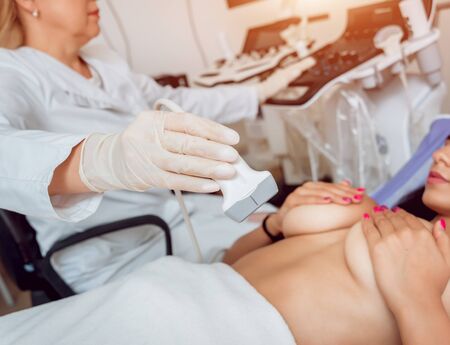Introduction to Fat Transfer for Facial Volume Restoration
Fat transfer, also known as fat grafting or lipofilling, has emerged as a highly sought-after aesthetic procedure within the UK’s cosmetic landscape. The essence of this innovative technique lies in its ability to restore lost facial volume by utilising a patient’s own fat, typically harvested from areas such as the abdomen or thighs. As we age, natural facial fat diminishes, leading to hollow cheeks, sunken temples, and deeper lines—subtle yet significant changes that can impact our confidence and sense of self. Fat transfer directly addresses these concerns by replenishing volume where it is most needed, achieving results that are both natural-looking and harmonious with each individual’s unique features. In recent years, there has been a marked shift in UK beauty trends toward subtle enhancement and authentic rejuvenation rather than dramatic alteration. Patients now seek refined contouring and revitalisation that respect their inherent facial structure—a goal perfectly suited to the artistry of fat transfer. By combining gentle restoration with enduring outcomes, this procedure has become increasingly relevant for those seeking to maintain their youthful contours while embracing the understated elegance characteristic of British aesthetics.
2. Understanding the Fat Transfer Procedure
If you are considering facial volume restoration, it’s essential to understand how fat transfer works and what makes this treatment increasingly popular among UK practitioners and patients alike. Fat transfer, also referred to as autologous fat grafting, is a sophisticated technique that involves harvesting a patient’s own fat from one part of the body—commonly the abdomen or thighs—and carefully injecting it into areas of the face that require volume enhancement or contour correction.
The Typical Steps Involved in Fat Transfer
| Step | Description |
|---|---|
| Consultation | A thorough assessment by a qualified practitioner to determine suitability and establish desired outcomes. |
| Harvesting | Fat is gently removed from donor areas using a minimally invasive liposuction technique. |
| Processing | The extracted fat is purified through specialised filtration or centrifugation to ensure only healthy fat cells are used. |
| Injection | The processed fat is meticulously injected into targeted facial areas in small amounts for natural-looking results. |
| Aftercare | Post-procedure guidance is provided to support healing and maximise longevity of the outcome. |
Advancements in UK Clinical Practice
The UK aesthetic field prides itself on maintaining rigorous safety standards and adopting innovative approaches to patient care. Recent advancements include refined harvesting techniques that minimise trauma to fat cells, improved processing technologies for higher graft survival rates, and tailored injection strategies designed for the unique structure of each individual’s face. British clinics increasingly emphasise subtlety and natural aesthetics, ensuring enhancements harmonise with each person’s features rather than overpower them.
What Sets UK Practitioners Apart?
UK experts often undergo comprehensive training not only in surgical technique but also in facial anatomy and artistry. This results in a personalised experience where patient wellbeing, discretion, and satisfaction are paramount. Moreover, ongoing research within the NHS and private sector continues to drive improvements in both safety profiles and outcome predictability for those seeking facial rejuvenation via fat transfer.

3. Benefits of Fat Transfer Compared to Other Treatments
When considering facial volume restoration in the UK, it’s essential to weigh the unique advantages of fat transfer against more traditional options like dermal fillers and implants. One of the most compelling benefits of fat transfer is its ability to deliver remarkably natural-looking results. Unlike synthetic fillers, which can sometimes appear obvious or create an overly “done” look, fat grafting uses your own tissue. This not only harmonises beautifully with your existing features but also feels more authentic to the touch—a point frequently highlighted by patients across London, Manchester, and other UK cities.
Another key advantage lies in the longevity of results. While dermal fillers are typically metabolised over several months and require regular top-ups, fat transfer offers a more enduring solution. Many British patients appreciate this aspect, especially when seeking subtle enhancements that don’t necessitate frequent visits to their aesthetic practitioner.
Moreover, the process itself appeals to those who value holistic approaches: using your own body fat reduces the risk of allergic reactions or rejection. For patients prioritising safety and biocompatibility—a growing trend within the UK’s discerning cosmetic community—this is a significant reassurance.
In addition, fat transfer procedures can be tailored with a level of precision that implants often cannot achieve. The technique allows for careful sculpting and layering, which is particularly beneficial for delicate areas like under the eyes or along the cheekbones. This customisation aligns well with British preferences for understated elegance rather than dramatic transformation.
Finally, there’s an added psychological benefit: many individuals report enhanced self-esteem knowing their rejuvenated appearance was achieved through a minimally invasive, natural method. Satisfaction rates among UK patients remain consistently high, reflecting both the artistry of experienced practitioners and the suitability of fat transfer for those seeking subtle yet impactful facial restoration.
4. Safety Profile and Potential Risks
When considering fat transfer procedures for facial volume restoration, safety is understandably a top priority for anyone in the UK contemplating this treatment. Leading British experts emphasise that, when performed by a qualified practitioner, fat grafting is generally considered safe and well-tolerated. However, as with any medical procedure, there are potential risks and concerns that patients should be aware of prior to making a decision.
Expert Insights: Safety Measures in the UK
Reputable clinics across the UK adhere to stringent protocols designed to minimise risks at every stage of the process. From initial consultation through to aftercare, practitioners focus on meticulous planning and patient assessment. Essential safety measures typically include:
| Safety Measure | Details |
|---|---|
| Pre-procedure Assessment | Comprehensive health evaluation, including medical history and suitability screening |
| Sterile Technique | Strict adherence to infection control and sterilisation protocols |
| Experienced Practitioners | Treatments performed by GMC-registered doctors or surgeons with specialised training |
| Modern Equipment | Use of advanced technology for harvesting, processing, and injecting fat cells safely |
| Aftercare Support | Clear guidance on post-procedure care and scheduled follow-ups for monitoring recovery |
Common Concerns Addressed by UK Experts
The most frequently raised questions among patients revolve around possible complications such as infection, asymmetry, bruising, or irregular results. Fortunately, these risks are significantly reduced when the procedure is carried out by skilled practitioners using proven techniques. In rare instances where complications arise, prompt intervention and support are readily available within reputable UK clinics.
How Practitioners Mitigate Risks for Optimal Outcomes
The key to optimal outcomes lies in personalised treatment planning and open communication between patient and practitioner. Trusted providers ensure each patient receives bespoke advice tailored to their individual anatomy and expectations. By following best practice guidelines endorsed by UK medical bodies, clinicians deliver consistently high standards of care while prioritising patient safety above all else.
If you are considering a fat transfer for facial rejuvenation in the UK, rest assured that with careful practitioner selection and a transparent approach to risk management, this procedure can be both safe and highly effective.
5. Typical Patient Experience in the UK
Embarking on a fat transfer procedure for facial volume restoration is a journey that many in the UK approach with both curiosity and cautious optimism. Understanding what to expect can greatly ease nerves and empower individuals to make informed decisions. Here’s a comprehensive walkthrough of the typical patient experience, from initial consultation to aftercare, tailored to UK standards and sensibilities.
The Initial Consultation
Your journey begins with a thorough consultation, often conducted in an established clinic setting. British practitioners are known for their professionalism and attentiveness; they take time to assess your medical history, discuss your aesthetic goals, and set realistic expectations. You’ll likely be asked about your lifestyle habits and overall health, ensuring you’re a suitable candidate for the procedure. This stage is also your opportunity to ask questions—no matter how small—and build confidence in both the surgeon’s expertise and your own decision-making process.
The Procedure Day
On the day of your procedure, expect a warm yet efficient welcome from clinic staff—a hallmark of UK patient care. Local anaesthetic is typically used, offering comfort while minimising risks associated with general anaesthesia. The surgeon will delicately harvest fat from an area such as your abdomen or thighs before purifying it for precise reinjection into targeted facial zones. The entire process is carried out with meticulous attention to hygiene and safety standards, reflecting the rigorous regulations governing cosmetic procedures in the UK.
Immediate Recovery & Support
Afterwards, you’ll be monitored briefly in-clinic before being allowed home—usually on the same day. Mild swelling or bruising is normal; clinics provide clear aftercare instructions and may offer follow-up calls to check on your progress. Many patients appreciate the British emphasis on discretion and privacy during this phase, helping them recover comfortably without unnecessary stress.
Aftercare & Long-Term Outcomes
UK clinics prioritise robust aftercare: you’ll receive guidance on managing any side effects, maintaining results, and recognising signs that warrant medical attention. Follow-up appointments are standard practice, allowing practitioners to monitor healing and address any concerns promptly. With proper care, results become more apparent over several weeks, leaving most patients feeling rejuvenated and naturally refreshed—often with a newfound sense of self-assurance.
This patient-centred approach ensures that anyone considering fat transfer for facial rejuvenation in the UK can expect a supportive, transparent experience every step of the way—one that values not just physical transformation but also emotional well-being.
6. Recovery Process and Expected Results
Understanding what to expect after a fat transfer procedure is essential for anyone considering facial volume restoration in the UK. Recovery timelines can vary depending on individual healing responses, the amount of fat transferred, and your overall health. Generally, patients can anticipate some swelling and minor bruising immediately post-procedure, which typically subsides within 7 to 14 days. Most people feel comfortable returning to work and daily activities within a week, though strenuous exercise should be avoided for at least two weeks.
Aftercare Best Practices
The key to a smooth recovery lies in diligent aftercare. UK specialists recommend keeping your head elevated, especially during sleep, to minimise swelling. Applying cold compresses intermittently during the first 48 hours can also help manage discomfort. It’s important to follow your clinician’s specific instructions regarding cleansing the area and using prescribed ointments or medications. Avoiding sun exposure and refraining from smoking will further enhance healing and improve your results.
What Patients Can Realistically Expect
One of the unique benefits of fat transfer is that it uses your own natural tissue, leading to results that look and feel authentic. Initial fullness may appear slightly exaggerated due to swelling; however, as this settles and some of the transferred fat is naturally reabsorbed by the body, the final outcome usually becomes apparent after about three months. While every patient’s experience varies, most enjoy noticeable rejuvenation with softer contours and a fresher, more youthful appearance that can last several years if well maintained.
Embracing Your New Look
Patience is crucial during the recovery phase. Although you’ll see early improvements within weeks, optimal results require time as your body integrates the new fat cells. Regular follow-ups with your UK-based provider ensure you stay on track with recovery and allow for any adjustments if necessary. With careful aftercare and realistic expectations, fat transfer can provide beautifully subtle yet transformative enhancement—empowering you to face each day with renewed confidence.
7. Choosing a Qualified Practitioner in the UK
When considering a fat transfer procedure for facial volume restoration, selecting the right practitioner is crucial to achieving safe, natural-looking results. In the UK, there are specific qualifications and standards that you should look for to ensure you are in expert hands. This gentle guide will help you navigate the process with confidence and clarity.
Essential Qualifications and Credentials
First and foremost, your chosen provider should be registered with the General Medical Council (GMC) and have specialist training in plastic, aesthetic, or reconstructive surgery. Membership of esteemed bodies such as the British Association of Plastic, Reconstructive and Aesthetic Surgeons (BAPRAS) or the British Association of Aesthetic Plastic Surgeons (BAAPS) is a reassuring sign of commitment to high standards and ongoing professional development.
Experience Matters
While credentials are vital, hands-on experience with fat transfer procedures is equally important. Ask your practitioner about their track record—how many facial fat transfers they have performed, their complication rates, and whether they can provide before-and-after photos of previous patients. An experienced provider will be transparent and happy to discuss their expertise.
What to Ask During Your Consultation
Your consultation is an opportunity to assess not only your practitioner’s technical skill but also their understanding of your goals and concerns. Consider asking these key questions:
- What is your experience with fat transfer for facial rejuvenation?
- Can you explain the risks and benefits specific to my case?
- What kind of anaesthesia do you use?
- How do you ensure optimal safety and hygiene during the procedure?
- What post-procedure support will I receive?
A Gentle Word on Personal Comfort
Your comfort with your practitioner is just as significant as their qualifications. The ideal provider will take time to listen to your expectations, answer all your questions thoroughly, and offer realistic advice tailored to your individual needs. Trust your instincts—if you feel rushed or uncertain at any stage, don’t hesitate to seek a second opinion.
Making an Informed Decision
Choosing a qualified practitioner in the UK for facial fat transfer is an empowering step towards restoring both appearance and confidence. By researching credentials, asking thoughtful questions, and prioritising clear communication, you’ll be well placed to make a decision that supports your wellbeing and delivers beautiful results.


